3,670cc DOHC Inline 6-Cylinder Engine Twin SU Carburetors 240bhp at 5,500rpm 4-Speed Manual Transmission Front Independent Suspension – Live Rear Axle 4-Wheel Disc Brakes *Original, left hand drive example *Retains the original, matching numbers engine *Long time California car *Documented by copies of factory records THE ASTON MARTIN DB4 Classically proportioned and instantly recognizable from the moment of its introduction, the Touring-styled Aston Martin DB4 established a look that would survive, with only minor revisions, until 1970. At its launch in October 1958, the DB4 marked a major turning point for Aston Martin as it was the first car of the David Brown era which neither used a chassis derived from the experimental Atom of 1939 nor an engine designed at Lagonda under the auspices of W O Bentley. Moreover, it was the first Aston Martin to carry Carrozzeria Touring's 'Superleggera' bodywork, in which light alloy panels were fixed to a framework of light-gauge steel tubes welded to a platform chassis. Although styled by Touring, the DB4's gorgeous fastback coachwork was built under license at Newport Pagnell by Aston Martin, which employed some of the finest panel beaters in the industry. The result was a car whose sleek lines were described as 'unmistakably Italian and yet... equally unmistakably Aston Martin.' First seen at Le Mans the previous year in the DBR2, the 3.7-liter, six-cylinder, double-overhead camshaft engine was the work of Tadek Marek, formerly with Austin, while the gearbox was a new David Brown four-speed all-synchromesh unit. An immensely strong platform-type chassis, designed by Harold Beach, replaced the preceding DB2/4's multi-tubular spaceframe, the latter being considered incompatible with Touring's Superleggera body construction. The DB2/4's trailing-link independent front suspension gave way to unequal-length wishbones while at the rear the DB4 sported a live axle located by a Watts linkage instead of its predecessor's Panhard rod. Boasting disc brakes all round and with 240bhp on tap, the DB4 was the first production car capable of accelerating from a standing start to 100mph and back to rest again in under 30 seconds. At a time when few family saloons were capable of exceeding 70mph and took an age to get there, this staggering performance made the DB4 just about the fastest thing on the road, easily the equal of its Italian rivals. Manufactured between October 1958 and June 1963, the DB4 developed through no fewer than five series. The first had already undergone a number of improvements, including the fitting of heavy-duty bumpers after the first 50 cars, before the second series arrived in January 1960. A front-hinged bonnet, bigger brake calipers, and an enlarged sump were the major changes made on the Series II, while the third series featured separate rear lights. The fourth series was readily distinguishable by its new grille (with seven vertical bars), shallower bonnet intake, and recessed rear lights, while the final (fifth) series manufactured between September 1962 and June 1963 was built on a 3.5" longer wheelbase. To many, the Series II is the most attractive of them all. One of the most notable developments had arrived with the introduction of the 'Series IV' in September 1961, when a 'Special Series' (SS) or 'Vantage' engine became available as an option. The 'SS' incorporated a 9.0:1 compression ratio, larger valves, and triple SU HD8 carburetors. THE MOTORCAR OFFERED According to a copy of the original factory build record on file, DB4 chassis number DB4/589/L was delivered new through Charles Hornburg's eponymous California dealership to George Alpogijnes, also known as George Gjines, of Los Angeles—living just one mile from what is now Bonhams Los Angeles office . Finished in the seldom seen combo of Black over Fawn Connolly hides with chromed wheels, white wall tires, a Motorola 606 radio, and a 17-inch steering wheel, the car was delivered on October 30, 1961. Thoroughly
3,670cc DOHC Inline 6-Cylinder Engine Twin SU Carburetors 240bhp at 5,500rpm 4-Speed Manual Transmission Front Independent Suspension – Live Rear Axle 4-Wheel Disc Brakes *Original, left hand drive example *Retains the original, matching numbers engine *Long time California car *Documented by copies of factory records THE ASTON MARTIN DB4 Classically proportioned and instantly recognizable from the moment of its introduction, the Touring-styled Aston Martin DB4 established a look that would survive, with only minor revisions, until 1970. At its launch in October 1958, the DB4 marked a major turning point for Aston Martin as it was the first car of the David Brown era which neither used a chassis derived from the experimental Atom of 1939 nor an engine designed at Lagonda under the auspices of W O Bentley. Moreover, it was the first Aston Martin to carry Carrozzeria Touring's 'Superleggera' bodywork, in which light alloy panels were fixed to a framework of light-gauge steel tubes welded to a platform chassis. Although styled by Touring, the DB4's gorgeous fastback coachwork was built under license at Newport Pagnell by Aston Martin, which employed some of the finest panel beaters in the industry. The result was a car whose sleek lines were described as 'unmistakably Italian and yet... equally unmistakably Aston Martin.' First seen at Le Mans the previous year in the DBR2, the 3.7-liter, six-cylinder, double-overhead camshaft engine was the work of Tadek Marek, formerly with Austin, while the gearbox was a new David Brown four-speed all-synchromesh unit. An immensely strong platform-type chassis, designed by Harold Beach, replaced the preceding DB2/4's multi-tubular spaceframe, the latter being considered incompatible with Touring's Superleggera body construction. The DB2/4's trailing-link independent front suspension gave way to unequal-length wishbones while at the rear the DB4 sported a live axle located by a Watts linkage instead of its predecessor's Panhard rod. Boasting disc brakes all round and with 240bhp on tap, the DB4 was the first production car capable of accelerating from a standing start to 100mph and back to rest again in under 30 seconds. At a time when few family saloons were capable of exceeding 70mph and took an age to get there, this staggering performance made the DB4 just about the fastest thing on the road, easily the equal of its Italian rivals. Manufactured between October 1958 and June 1963, the DB4 developed through no fewer than five series. The first had already undergone a number of improvements, including the fitting of heavy-duty bumpers after the first 50 cars, before the second series arrived in January 1960. A front-hinged bonnet, bigger brake calipers, and an enlarged sump were the major changes made on the Series II, while the third series featured separate rear lights. The fourth series was readily distinguishable by its new grille (with seven vertical bars), shallower bonnet intake, and recessed rear lights, while the final (fifth) series manufactured between September 1962 and June 1963 was built on a 3.5" longer wheelbase. To many, the Series II is the most attractive of them all. One of the most notable developments had arrived with the introduction of the 'Series IV' in September 1961, when a 'Special Series' (SS) or 'Vantage' engine became available as an option. The 'SS' incorporated a 9.0:1 compression ratio, larger valves, and triple SU HD8 carburetors. THE MOTORCAR OFFERED According to a copy of the original factory build record on file, DB4 chassis number DB4/589/L was delivered new through Charles Hornburg's eponymous California dealership to George Alpogijnes, also known as George Gjines, of Los Angeles—living just one mile from what is now Bonhams Los Angeles office . Finished in the seldom seen combo of Black over Fawn Connolly hides with chromed wheels, white wall tires, a Motorola 606 radio, and a 17-inch steering wheel, the car was delivered on October 30, 1961. Thoroughly



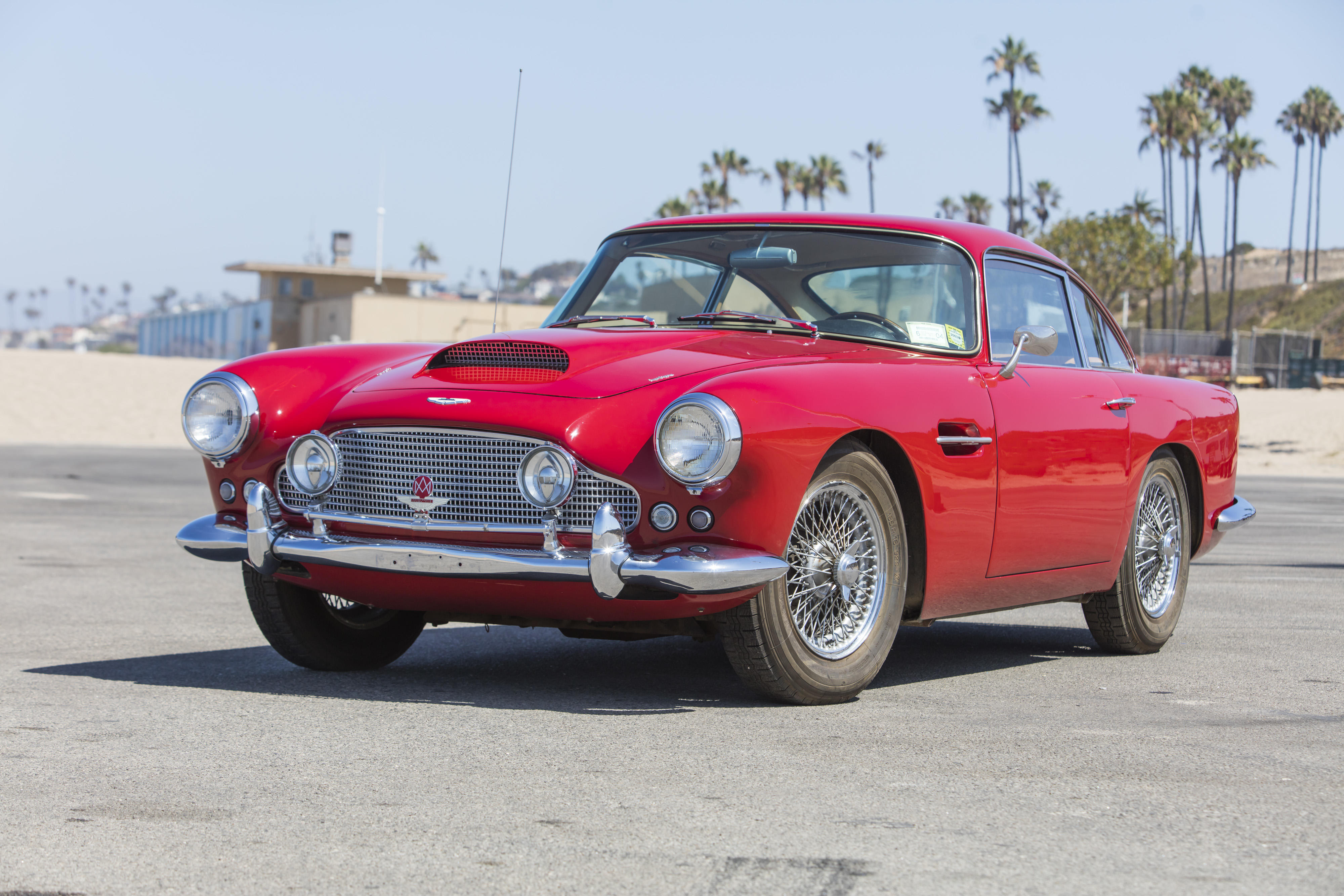

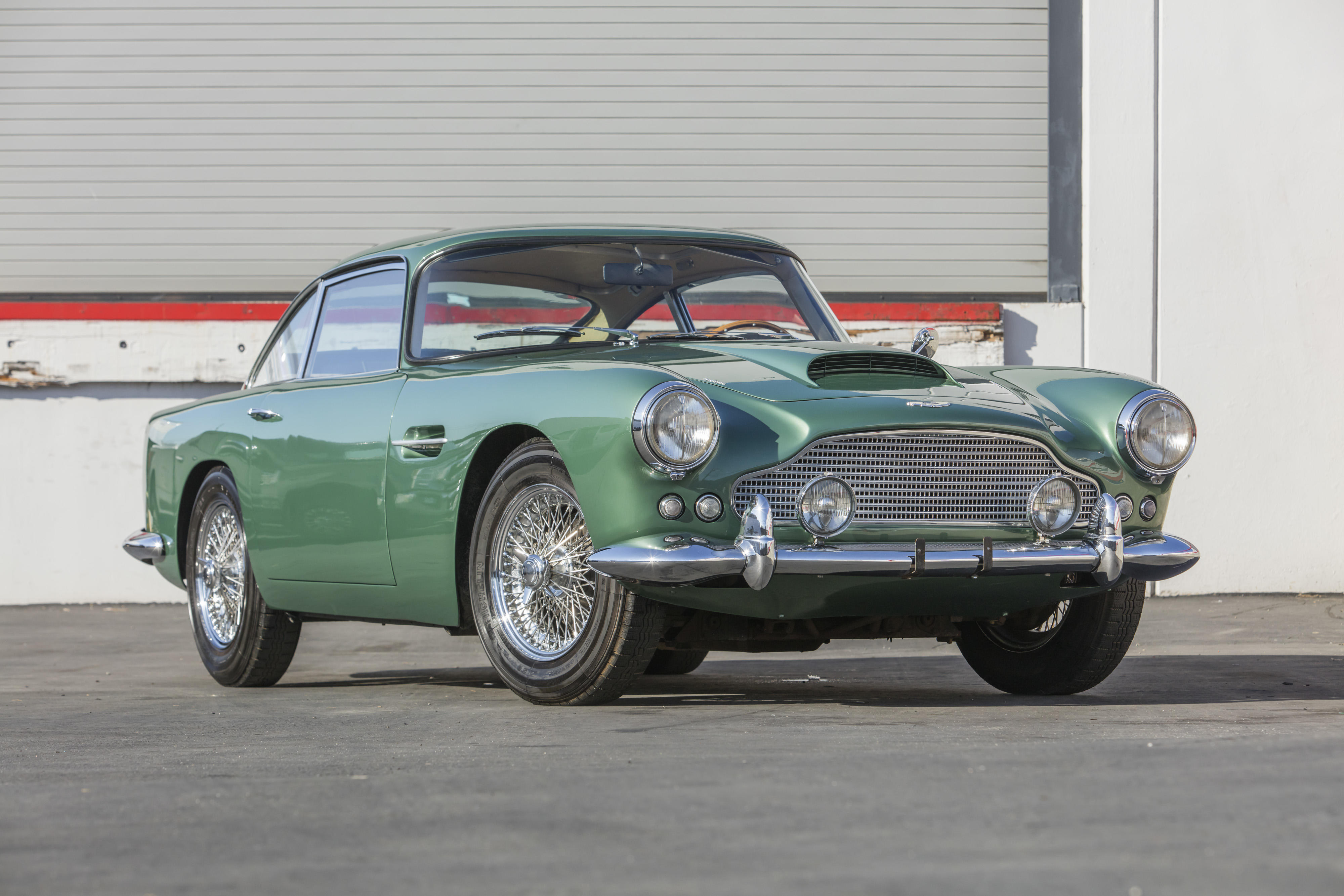


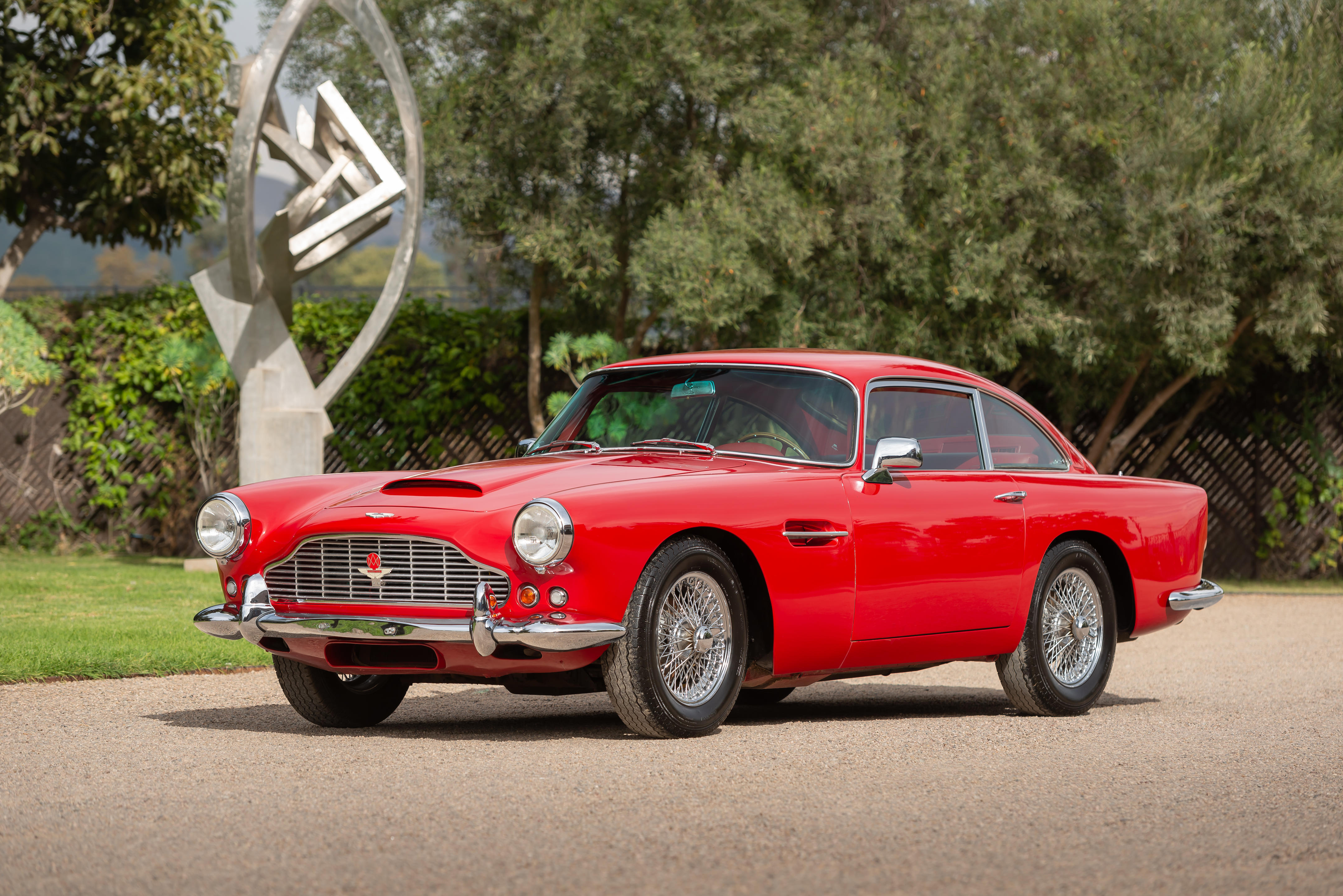

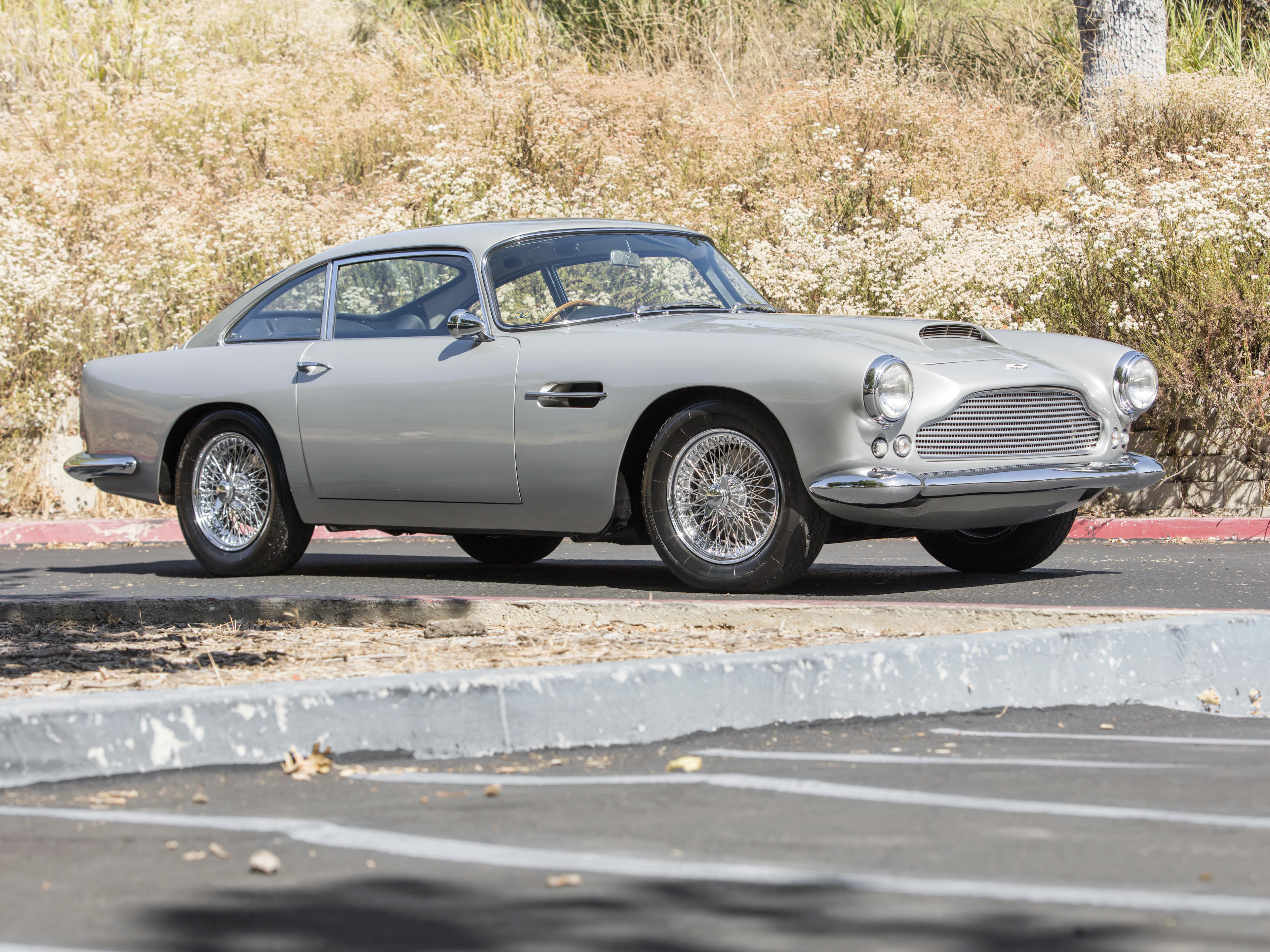
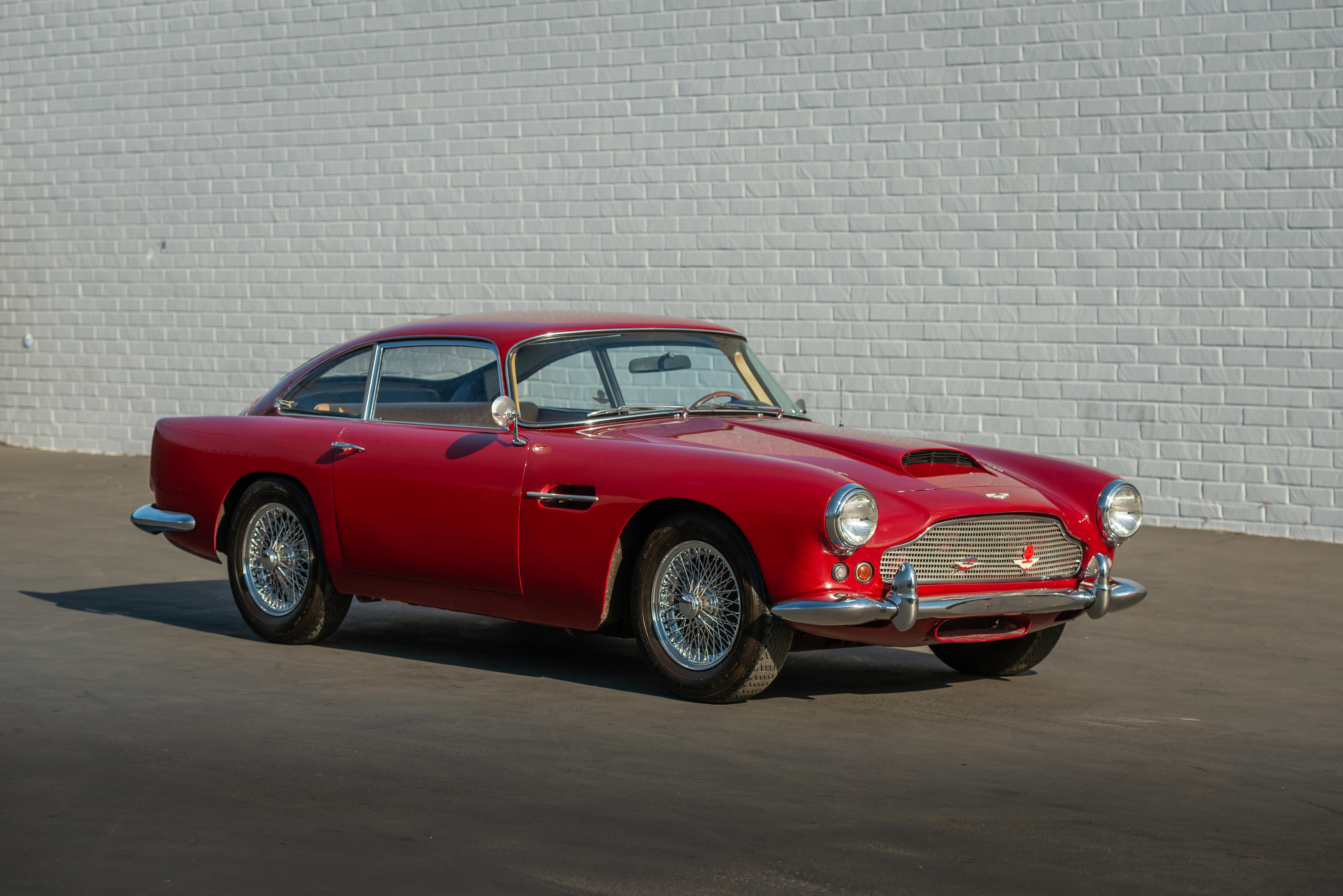



Try LotSearch and its premium features for 7 days - without any costs!
Be notified automatically about new items in upcoming auctions.
Create an alert